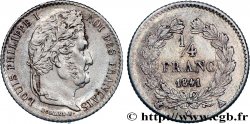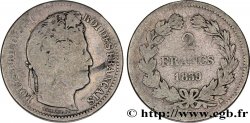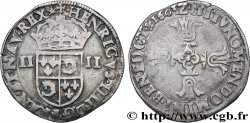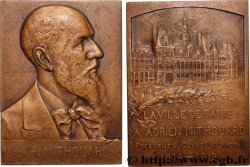Live auction - fme_1000316 - LOUIS-PHILIPPE I Médaille du mémorial de St-Hélène
Чтобы принять участие в торгах, вы должны войти в систему и стать подтвержденным участником аукциона. Войдите, чтобы сделать ставку. Ваш аккаунт будет подтвержден в течение 48 часов. Не ждите до закрытия торгов, чтобы зарегистрироваться.Сделав ставку на данный товар, вы вступаете в юридическое соглашение на покупку выбранного товара и нажатием кнопки «Сделать ставку» подтверждаете принятие вами условий интернет-аукционов cgb.fr.
Ставка может бить сделана только в полном эквиваленте евро. Торги закроются согласно времени, указанному в описании товара, все ставки, сделанные после закрытия торгов, учитываться не будут. Не следует откладывать предложение вашей ставки до последнего момента, так как система может не успеть обработать вашу заявку, и ваша ставка не будет принята. Более детальную информацию вы найдёте здесь: FAQ по интернет-аукционам.
Все ставки победителей подлежат комиссии 18%.
Все ставки победителей подлежат комиссии 18%.
| Оценить : | 120 € |
| Цена : | Нет ставки |
| Максимальная предлагаемая цена : | Нет ставки |
| Конец торгов : | 13 May 2025 17:45:15 |
Тип Médaille du mémorial de St-Hélène
Дата: 1840
Монетный двор / Город: 75 - Paris
Металл: copper
Диаметр: 41 mm
Ориентация осей монеты: 12 h.
Гравер BOVY Antoine (1795-1877)
Вес: 38,72 g.
Век: lisse + proue CUIVRE
Пуансон: Proue (1842 - 1845)
Комментарии о состоянии
Patine marron hétérogène avec quelques taches d’oxydation et concrétions. Légère usure
Ссылки в каталоге: :
Лицевая сторона
Аверс: легенда: NAPOLEON - EMPEREUR.
Аверс: описание: Buste de Napoléon à gauche.
Обратная сторона
Реверс: легенда: MÉMORIAL DE STE-HELENE / 5 MAI MDCCCXXI. PARIS 15 DEC. MDCCCXL.
Реверс: Описание: Vue du mémorial de l'île de Sainte Hélène.
Комментарий
Cette médaille n’est pas spécialement rare, mais recherchée. Elle présente sur la tranche le poinçon proue utilisé de 1842 à 1845.
Après la défaite de Waterloo, Napoléon est exilé et déporté par les Britanniques sur l'île Sainte-Hélène où il débarque en octobre 1815. Il y meurt le 5 mai 1821. Conformément à ses dernières volontés, Napoléon est inhumé le 9 mai près d'une source dans la vallée du Géranium, dénommée depuis “vallée du Tombeau”. Le 27 mai, toute la colonie française quitte l'île. En 1840, le roi Louis-Philippe obtient du Royaume-Uni la restitution des cendres de l'Empereur. L'exhumation du corps de Napoléon a lieu le 15 octobre 1840, puis il est rapatrié en France et enterré aux Invalides à Paris.
This medal is not particularly rare, but sought after. It features on the edge the prow hallmark used from 1842 to 1845. After the defeat at Waterloo, Napoleon was exiled and deported by the British to the island of Saint Helena, where he landed in October 1815. He died there on May 5, 1821. In accordance with his last wishes, Napoleon was buried on May 9 near a spring in the Geranium Valley, since called the “Tomb Valley.” On May 27, the entire French colony left the island. In 1840, King Louis-Philippe obtained the return of the Emperor's ashes from the United Kingdom. The exhumation of Napoleon's body took place on October 15, 1840, and he was then repatriated to France and buried at Les Invalides in Paris.
Après la défaite de Waterloo, Napoléon est exilé et déporté par les Britanniques sur l'île Sainte-Hélène où il débarque en octobre 1815. Il y meurt le 5 mai 1821. Conformément à ses dernières volontés, Napoléon est inhumé le 9 mai près d'une source dans la vallée du Géranium, dénommée depuis “vallée du Tombeau”. Le 27 mai, toute la colonie française quitte l'île. En 1840, le roi Louis-Philippe obtient du Royaume-Uni la restitution des cendres de l'Empereur. L'exhumation du corps de Napoléon a lieu le 15 octobre 1840, puis il est rapatrié en France et enterré aux Invalides à Paris.
This medal is not particularly rare, but sought after. It features on the edge the prow hallmark used from 1842 to 1845. After the defeat at Waterloo, Napoleon was exiled and deported by the British to the island of Saint Helena, where he landed in October 1815. He died there on May 5, 1821. In accordance with his last wishes, Napoleon was buried on May 9 near a spring in the Geranium Valley, since called the “Tomb Valley.” On May 27, the entire French colony left the island. In 1840, King Louis-Philippe obtained the return of the Emperor's ashes from the United Kingdom. The exhumation of Napoleon's body took place on October 15, 1840, and he was then repatriated to France and buried at Les Invalides in Paris.








 Cообщить об ошибке
Cообщить об ошибке Распечатать страницу
Распечатать страницу Отправить мой выбор
Отправить мой выбор Задать вопрос
Задать вопрос Consign / sell
Consign / sell
 Информация
Информация















